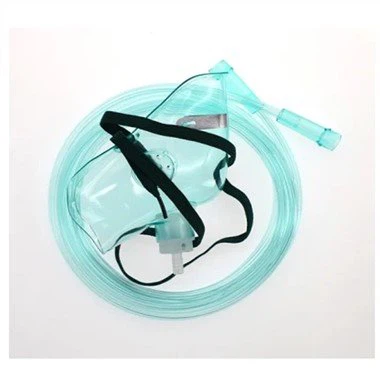How To Deal With The Failure Of Infusion Set
Jun 15, 2022
In the application of clinical infusion sets, syringe manufacturers not only effectively avoid the occurrence of cross infection, but also convenient and affordable. However, some problems are often encountered in actual use, such as improper handling, which will cause adverse consequences and even endanger lives. Now the experience is introduced as follows.
1. Air enters above the infusion tube
During infusion, if the needle of the infusion tube inserted into the cork of the infusion bottle is opposite to the inclined plane of the vent needle, and the distance is relatively close, and the position of the vent needle is slightly lower than the position of the infusion tube needle, the suction generated by the liquid flow rate in the infusion tube will suck the bubbles generated by the vent needle into the infusion tube. In addition, the needle after inserting the cork of the infusion bottle is not stable because the cork surface is thin. If the infusion tube is affected by external forces such as the movement of the patient's body during infusion, the needle of the infusion tube connected to it will also move in the corresponding direction and position. Subsequently, whether the infusion pipe is air intake or not also changes due to whether the moved infusion pipe needle and ventilation needle are in the air intake position. If the two needles are in the air inlet position, air can enter the infusion tube from the needle of the infusion tube.
handle:
(1) Prevent air from entering from the top of the infusion tube. When inserting the needle into the bottle stopper with the infusion tube or changing the liquid, avoid the inclined planes of the two needles being opposite, and keep a certain distance;
(2) During infusion, if air intake is found above the infusion tube, one of the two needles should be rotated immediately, and the inclined direction of the needle should be turned so that the inclined direction of the needle is back, which can immediately prevent air from entering.
Infusion device
2. Liquid leaks from the air pipe
In order to prevent the outflow of liquid, the usual practice is to pull out the ventilation needle on the cork of the infusion tube bottle or hold the ventilation tube with hands or pliers for a moment, and then insert or open the ventilation needle after a certain amount of liquid is injected. Doing so will not only waste time but also cause waste.
handle:
(1) To prevent liquid leakage, when adding liquid medicine into the infusion bottle, pay attention to that the amount of air pumped out is greater than or equal to the amount of liquid medicine added;
(2) In the case of liquid leakage, the infusion bottle can be reversed after the needle of the infusion pipe is pulled out, so that the air in the bottle can escape from the needle by self ventilation. After the air pressure inside and outside the bottle is balanced, insert the needle of the infusion tube, and the leakage can be stopped.
3. Venous blood reflux
Sometimes, after replacing the non medicated liquid in clinical infusion, due to the large negative pressure in the infusion bottle, more blood reflux is caused, which is easy to cause psychological pressure to patients. Treatment: when changing the liquid every time, pay attention to insert the ventilation needle into the cork of the infusion bottle first, and then insert the needle of the infusion tube after the negative pressure in the infusion bottle becomes positive pressure, so as to avoid the phenomenon of blood reflux in the infusion tube.
4. Liquid dripping stops with blood reflux
Sometimes, when the infusion is halfway through, the liquid input stops, and the blood continues to flow back to the silicone tube of the scalp needle. After pressing with the hand, the blood can be squeezed into the blood vessels. After releasing the hand, the blood continues to flow back. In the treatment, another unobstructed needle can be taken and inserted into the cork of the infusion bottle to restore the normal state of infusion.







